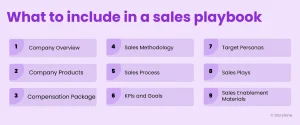
Let’s be honest—selling to niche markets isn’t like hawking mass-market products. You’re not shouting into a void. You’re whispering to a tight-knit group of enthusiasts, collectors, or specialists who care. And that’s where community-driven sales models shine.
Why Community-Driven Sales Work for Niches
Think of niche markets like underground music scenes. Fans don’t just buy albums—they trade bootlegs, argue over lyrics, and follow bands to dive bars. That passion? It’s your sales fuel. Here’s why community-driven models hit different:
- Trust over transactions: Niches thrive on word-of-mouth. A recommendation from a fellow enthusiast beats any ad.
- Feedback loops: Communities shape products in real-time. Ever seen a indie game developer tweak gameplay based on Discord chatter? Exactly.
- Built-in retention: People stick around for the tribe, not just the product. Churn rates drop when buyers feel like insiders.
4 Community-Driven Models That Actually Work
1. The Membership Club
Patagonia’s Worn Wear program isn’t just about selling used gear—it’s a badge of honor for eco-conscious outdoorsy types. Members trade stories, repair tips, and yeah, buy more gear. The key? Exclusive perks that feel personal.
2. Crowdsourced Product Development
Glowforge’s laser cutters exploded because they let backers beta-test designs. Niche makers love feeling like co-creators. Pro tip: Use platforms like Kickstarter or private Slack groups to turn customers into R&D partners.
3. User-Generated Content Hubs
LEGO Ideas is a masterclass here. Fans submit designs, vote on them, and the winners become real sets. Suddenly, your marketing is a gallery of customer passion projects. Sneaky, right?
4. Localized Micro-Communities
Ever met a hardcore sourdough baker? They’ll drive hours for the right flour. Brands like Central Milling host regional baking circles—part classes, part cult gatherings. Geo-targeted Facebook Groups or Meetups can work wonders here.
The Dark Art of Niche Community Building
Here’s the deal: You can’t fake this. Niche audiences smell corporate BS from miles away. A few survival tips:
- Hire niche-native moderators: Get that 40-year-old Warhammer nerd to run your Discord. They’ll speak the language.
- Celebrate inside jokes: Remember when that obscure vinyl collector meme went viral? Lean into it.
- Reward loyalty weirdly: Custom enamel pins. Handwritten notes on vintage postcards. Stuff that’d baffle normies but delight your people.
Metrics That Matter (And Ones That Don’t)
Forget vanity metrics. In niche communities, 100 hyper-engaged members beat 10,000 passive followers. Watch these instead:
| What to Track | Why It Matters |
| Repeat purchase rate | Shows if your community actually drives sales |
| UGC submissions | Measures true engagement (not just likes) |
| Referral traffic | Proof your members are evangelizing |
| Avg. session duration | Are they geeking out in your forums or bouncing? |
The Future? It’s Already Here
Look at Meow Wolf—an art collective turned immersive experience empire. Their secret? Fans didn’t just buy tickets; they donated scrap metal for installations and got their names welded into the exhibits. That’s not marketing. That’s alchemy.
So here’s the question: Is your niche business selling to a community—or through one?








